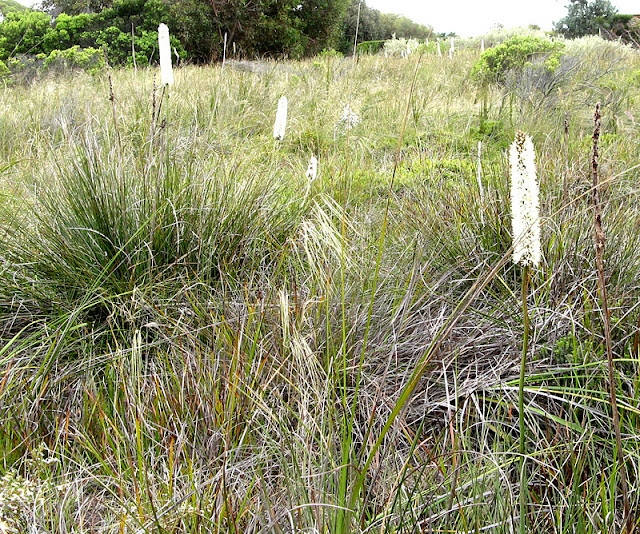This morning we walked along the clifftops and below are some of the flowers that caught my eye. I showed a picture of this blue flowering vine on the 9th October. Here it is much clearer that the flower is blue. Also I have never noticed it growing so densely before. I think this 'bush' has been pruned by the wind.
The white flowers here are of the 'woolly tea-tree' (Leptospernum lanigerum), which grow extensively in the clifftop heaths.
My attention was also caught by this flower spike, about 60 centimeters high. It may be a dwarf from of Xanthorea the Australian grass tree but I'm not sure.
The Helichrysum pictured is the first I've noticed this spring. The paper-like petals last long after the seed-head has dispersed.
The bright orange/yellow of the lichen on this fence post was almost luminous in the overcast conditions of today's weather.
Here is a simplified version of the same material in a ceramic vase by Barrie Singleton. The vase has a splash made of tiny red lines on one side.
On the other side are just a few of the red lines which are probably only visible if you are able to enlarge the picture.
Greetings from Christopher
6th November 2011









No comments:
Post a Comment